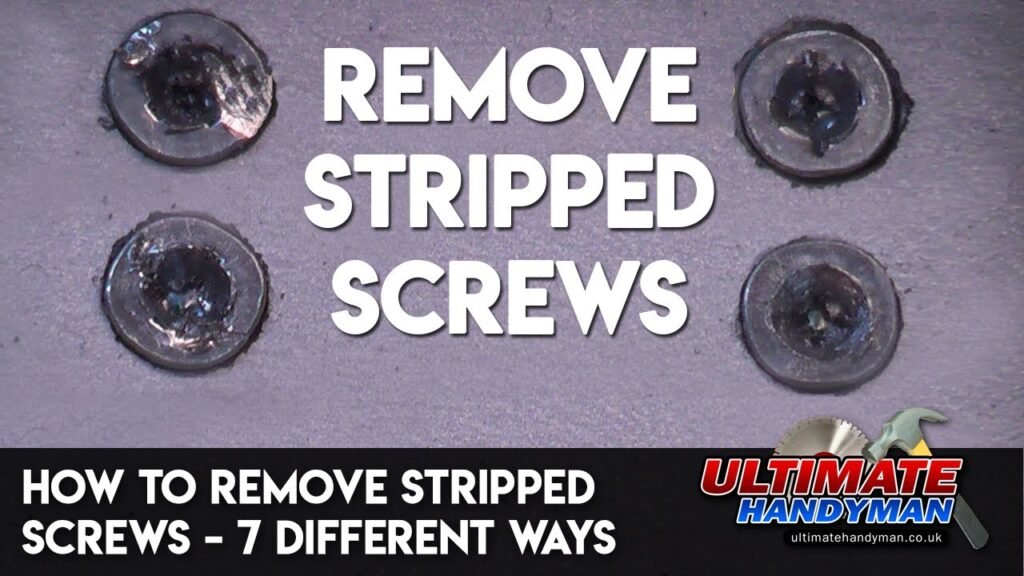Dealing with a stripped screw can be an exasperating challenge that halts your DIY project or repair job in its tracks. Whether you’re assembling furniture, fixing electronic devices, or undertaking a home improvement project, encountering a stripped screw is not uncommon. The frustration of not being able to remove a screw because its head is damaged can seem insurmountable. However, with the right techniques and tools, you can effectively tackle this issue. This article aims to provide a detailed, informative guide on how to remove a stripped screw, ensuring your projects can proceed smoothly without unnecessary delays.
Understanding the Problem
A screw becomes “stripped” when the grooves on the screw head are worn or damaged to the point where a screwdriver can no longer grip them. This often occurs due to using the wrong type or size of screwdriver, excessive force, or the natural wear and tear over time. Recognizing the extent of the damage and understanding the type of screw you’re dealing with is the first step in determining the most effective removal method.
Tools and Techniques for Removal
Several techniques and specialized tools are available for tackling stripped screws, each with its own set of advantages. Choosing the right method often depends on the severity of the damage, the screw’s size, and its location.
1. Rubber Band Method
A surprisingly simple yet effective technique involves placing a wide rubber band between the screwdriver and the stripped screw head. The rubber band fills the gaps in the stripped head, providing the extra grip needed to turn the screw. This method is most effective for screws that are not overly stripped or for those with shallow heads.
2. Using Pliers
If the screw head protrudes above the surface, locking pliers (also known as Vise-Grips) can be a straightforward solution. Adjust the pliers to tightly clamp around the screw head and turn it slowly to remove the screw. This method requires some clearance around the screw head and may not be suitable for flush or countersunk screws.
3. Screw Extraction Kits
Screw extraction kits are specifically designed to remove stripped or damaged screws. These kits usually contain a drill bit and an extractor. First, you use the drill bit to create a small hole in the center of the screw head. Then, the extractor is inserted into this hole and turned counterclockwise. The extractor’s threads grip the interior of the hole, allowing you to unscrew the damaged screw. While effective, this method does require careful handling to avoid further damage to the surrounding material.
4. Drilling Out the Screw
In cases where the screw cannot be gripped externally and is severely stripped, drilling out the screw may be the only option. This involves using a drill bit slightly larger than the screw shaft to drill through the head of the screw until it comes off. The remaining screw shaft can then be removed with pliers. This method should be a last resort as it can damage the material around the screw if not done carefully.
Preventive Measures and Tips
Preventing screws from stripping is preferable to dealing with the aftermath. Here are some tips to avoid this frustrating issue:
- Always use the correct size and type of screwdriver for the screw.
- Apply pressure evenly and directly when turning the screw to avoid slipping.
- Avoid using excessive force, especially with power tools.
- Consider lubricating the screw with a penetrating oil if it seems difficult to turn, as this can reduce the risk of stripping.
Conclusion
Removing a stripped screw requires patience, the right tools, and a bit of technique. Whether you opt for a simple rubber band trick or employ a specialized screw extraction kit, the key is to work carefully to avoid further damage. By understanding the various methods available and taking preventive measures during your projects, you can minimize the occurrence of stripped screws and handle them effectively when they do arise. Remember, each stripped screw presents a unique challenge, but with this comprehensive guide, you’re well-equipped to tackle even the most stubborn screws.

